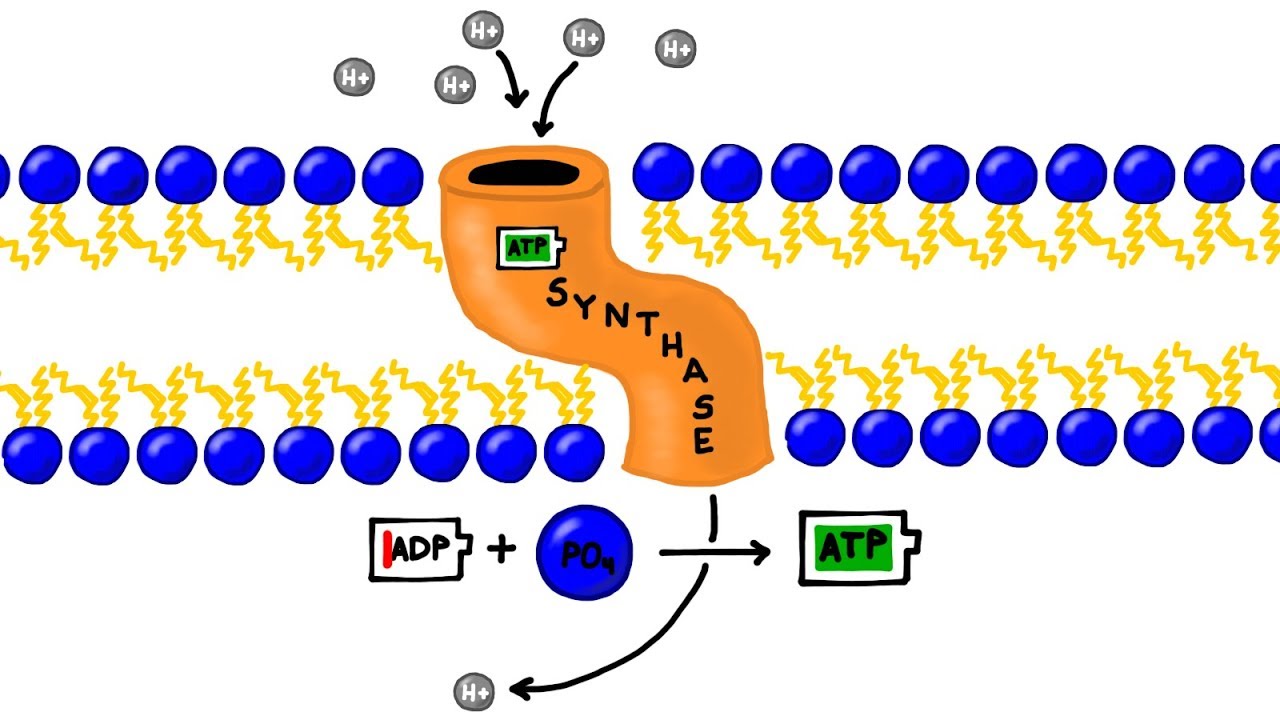
Chemiosmosis is a process that might sound complex, but it's essential for life. Ever wondered how cells produce energy? Chemiosmosis is the answer. This process happens in the mitochondria of cells, where it helps generate ATP, the energy currency of the cell. Without it, cells wouldn't have the energy to perform vital functions. Chemiosmosis involves the movement of ions across a membrane, creating a gradient that powers ATP synthesis. It's like a tiny power plant inside your cells. Understanding chemiosmosis can give you a deeper appreciation for how life sustains itself at the cellular level. Ready to learn more? Let's dive into 32 fascinating facts about chemiosmosis!
What is Chemiosmosis?
Chemiosmosis is a fundamental process in cellular respiration and photosynthesis. It involves the movement of ions across a selectively permeable membrane, down their electrochemical gradient. This process is crucial for ATP production, the energy currency of cells.
- Chemiosmosis occurs in both mitochondria and chloroplasts.
- Peter Mitchell proposed the chemiosmotic theory in 1961.
- ATP synthase is the enzyme that facilitates ATP production during chemiosmosis.
- Proton gradients drive the process of chemiosmosis.
- Electron transport chains create the proton gradient needed for chemiosmosis.
How Chemiosmosis Works
Understanding the mechanics of chemiosmosis can help grasp its importance in energy production. The process involves several steps and components working together seamlessly.
- Electrons are transferred through a series of proteins in the electron transport chain.
- Protons are pumped across the membrane, creating a gradient.
- Energy from electrons is used to pump protons.
- Proton motive force is the energy stored in the proton gradient.
- ATP synthase uses the proton motive force to synthesize ATP.
Importance of Chemiosmosis in Cellular Respiration
Chemiosmosis plays a pivotal role in cellular respiration, particularly in the mitochondria. It is the final step in the production of ATP, making it essential for cellular energy.
- Oxidative phosphorylation is the stage of cellular respiration where chemiosmosis occurs.
- Mitochondrial inner membrane is where the electron transport chain is located.
- NADH and FADH2 donate electrons to the electron transport chain.
- Oxygen is the final electron acceptor in the electron transport chain.
- Water is produced when oxygen accepts electrons and protons.
Role of Chemiosmosis in Photosynthesis
In photosynthesis, chemiosmosis occurs in the chloroplasts, specifically within the thylakoid membranes. It is crucial for converting light energy into chemical energy.
- Light reactions of photosynthesis involve chemiosmosis.
- Thylakoid membrane is where the electron transport chain in chloroplasts is located.
- Photophosphorylation is the process of ATP production in photosynthesis.
- Chlorophyll absorbs light energy to drive electron transport.
- NADP+ is the final electron acceptor in the light reactions.
Key Components in Chemiosmosis
Several key components are involved in the process of chemiosmosis. Each plays a specific role in ensuring the efficient production of ATP.
- Cytochromes are proteins that transfer electrons in the electron transport chain.
- Ubiquinone is a lipid-soluble electron carrier in the electron transport chain.
- Proton pumps are proteins that move protons across the membrane.
- ATP synthase has a rotor-like structure that synthesizes ATP.
- ADP and inorganic phosphate are substrates for ATP synthesis.
Chemiosmosis and Energy Efficiency
Chemiosmosis is an incredibly efficient way of producing ATP. It maximizes the energy extracted from nutrients and light, making it a vital process for life.
- Efficiency of chemiosmosis is higher than substrate-level phosphorylation.
- Energy yield from one glucose molecule can be up to 38 ATP molecules.
- Heat is a byproduct of chemiosmosis, contributing to body temperature regulation.
- Uncoupling proteins can disrupt the proton gradient, affecting ATP production.
- Brown fat uses uncoupling proteins to generate heat instead of ATP.
Evolutionary Significance of Chemiosmosis
Chemiosmosis is not only crucial for current life forms but also played a significant role in the evolution of complex life. Its efficiency and effectiveness have been conserved through evolution.
- Ancient prokaryotes likely used chemiosmosis before the evolution of eukaryotes.
- Endosymbiotic theory suggests mitochondria and chloroplasts originated from prokaryotic cells capable of chemiosmosis.
The Power of Chemiosmosis
Chemiosmosis is a fascinating process that powers life. It’s the driving force behind ATP production, the energy currency of cells. Without it, plants couldn’t photosynthesize, and animals couldn’t generate the energy needed for survival. This process highlights the intricate dance of protons and electrons within cells, showcasing nature’s efficiency. Understanding chemiosmosis not only deepens our knowledge of biology but also opens doors to potential advancements in medicine and bioengineering. From the tiny mitochondria in our cells to the chloroplasts in plants, chemiosmosis is a testament to the marvels of cellular machinery. Next time you take a breath or enjoy a meal, remember the incredible process working tirelessly behind the scenes. Chemiosmosis truly is a cornerstone of life, underscoring the beauty and complexity of biological systems.
Was this page helpful?
Our commitment to delivering trustworthy and engaging content is at the heart of what we do. Each fact on our site is contributed by real users like you, bringing a wealth of diverse insights and information. To ensure the highest standards of accuracy and reliability, our dedicated editors meticulously review each submission. This process guarantees that the facts we share are not only fascinating but also credible. Trust in our commitment to quality and authenticity as you explore and learn with us.
